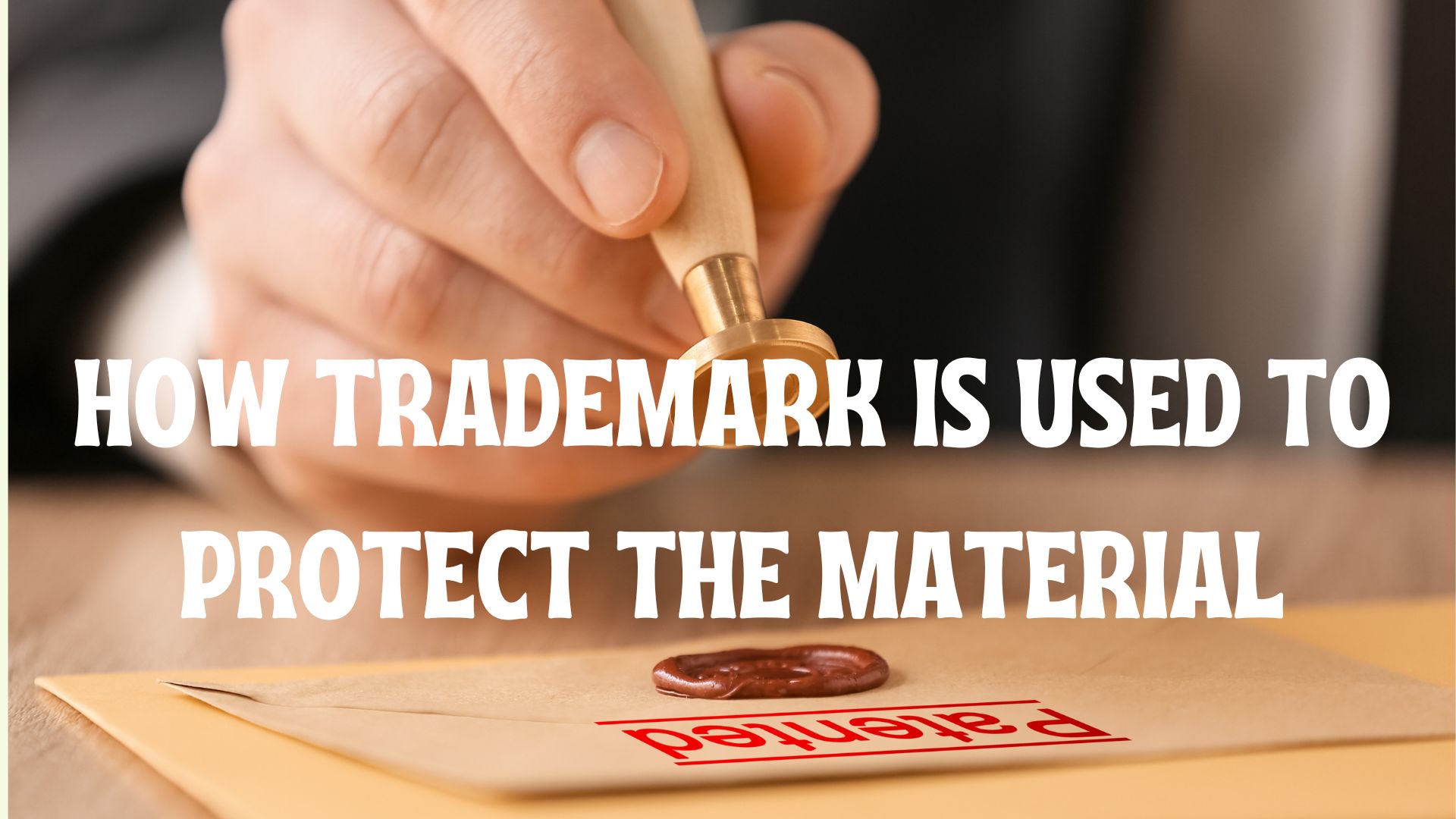In today's world, where ideas are currency and creativity
drives industries, protecting intellectual property has become more critical
than ever. Among the various tools available for safeguarding creative works,
trademarks stand out as one of the most potent. Trademarks not only serve as
identifiers of goods and services but also play a crucial role in protecting
the material they represent. Let's delve into how trademarks are used to
safeguard intellectual property.
What is a Trademark?
Before delving into its protective function, it's essential
to understand what a trademark is. A trademark is a distinctive sign, symbol,
word, or phrase used to identify and distinguish the goods or services of one
seller from those of others. It can be a logo, a brand name, a slogan, or even
a combination of colors and sounds. The primary purpose of a trademark is to
enable consumers to recognize and associate products or services with a
particular source, ensuring quality and fostering brand loyalty.
Protection Through
Distinctiveness
One of the key ways trademarks safeguard material is by
establishing distinctiveness in the market. When a business registers a
trademark for its products or services, it essentially lays claim to that mark
and its associated material. This exclusivity grants the owner the legal right
to prevent others from using similar marks in a way that could cause confusion
among consumers. By protecting the distinctiveness of its branding, a company
can safeguard its reputation and prevent dilution of its brand identity.
Preventing Confusion
and Misrepresentation
Trademark protection also serves to prevent confusion and
misrepresentation in the marketplace. When consumers see a trademark, they
associate it with a certain level of quality and reliability. If unauthorized
parties were to use a similar mark on inferior products or services, it could
mislead consumers into believing they are associated with the original brand.
This can lead to reputational damage and financial losses for the rightful
trademark owner. Through legal mechanisms such as cease and desist letters,
injunctions, and litigation if necessary, trademark owners can enforce their
rights and prevent such misrepresentation.
Maintaining Brand
Integrity
Another crucial aspect of trademark protection is
maintaining brand integrity. A trademark registration represents more than just a product or
service; it embodies the values, reputation, and trust that consumers associate
with a particular brand. Unauthorized use or infringement of a trademark can
tarnish this reputation and erode consumer confidence. By actively monitoring
and enforcing their trademarks, companies can ensure that their brand integrity
remains intact, thereby preserving the value of their material in the eyes of
consumers.
Global Protection
In an increasingly globalized economy, trademarks provide a
means of protecting material on an international scale. Through mechanisms such
as the Madrid System for the International Registration of Marks, businesses
can obtain trademark protection in multiple countries with a single
application. This global protection is essential for companies operating in
diverse markets, ensuring that their material is safeguarded wherever they do business.
What kind of products
is protected by a trademark?
Trademarks can protect a wide range of products and services
across various industries. Here are some examples:
1. Consumer Goods: Trademarks protect products that
consumers use in their daily lives, such as clothing, footwear, accessories,
electronics, household appliances, toys, and personal care items. For example,
Nike's swoosh logo and "Just Do It" slogan are trademarks that
protect their athletic footwear and apparel.
2. Food and Beverages: Brands in the food and beverage
industry rely heavily on trademarks to distinguish their products from
competitors. Examples include Coca-Cola's distinctive logo and script,
McDonald's golden arches, and the Starbucks mermaid logo.
3. Technology and Electronics: Trademarks play a crucial
role in the technology sector, protecting products such as smartphones,
computers, software, and electronic gadgets. Apple's bitten apple logo and the
name "iPhone" are iconic trademarks in this industry.
4. Entertainment and Media: Trademarks are essential for
protecting intellectual property in the entertainment and media industries.
This includes trademarks for films, TV shows, music, video games, and
publishing. Disney's Mickey Mouse ears logo and the Warner Bros. shield are
well-known examples.
5. Automotive: Automobile manufacturers use trademarks to
protect their vehicle designs, logos, and brand names. Examples include the BMW
roundel logo, the Ferrari prancing horse emblem, and the Toyota nameplate.
6. Pharmaceuticals and Healthcare: Trademarks are crucial in
the pharmaceutical and healthcare sectors to protect brand names for
medications, medical devices, and healthcare services. Pfizer's Viagra and
Johnson & Johnson's Band-Aid are examples of trademarked pharmaceutical
products.
7. Services: Trademarks also protect services rather than
physical products. This includes businesses such as restaurants, hotels,
airlines, banks, law firms, and consulting firms. Examples include McDonald's
for fast-food services, Hilton for hospitality services, and American Express
for financial services.
8. Luxury Goods: Trademarks are particularly important for
luxury brands, as they rely on brand recognition and exclusivity. Examples
include Louis Vuitton's LV monogram, Chanel's interlocking Cs, and Rolex's
crown logo.
9. Sports and Fitness: Sporting goods, athletic apparel, and
fitness equipment are protected by trademarks. Examples include Adidas's three
stripes, Under Armour's logo, and Reebok's vector logo.
These are just a few examples, but trademarks can be applied
to almost any product or service that requires branding and differentiation in
the marketplace. Whether it's a physical product, a digital service, or an
experience, trademarks are essential for protecting the identity and reputation
of businesses and their offerings.
Conclusion
Trademarks are invaluable assets that play a pivotal role in
protecting material in today's competitive marketplace. By establishing
distinctiveness, preventing confusion and misrepresentation, maintaining brand
integrity, and offering global protection, trademarks serve as powerful tools
for safeguarding intellectual property. As businesses continue to innovate and
create new material, ensuring robust trademark protection will remain essential
for preserving their competitive advantage and fostering innovation in the
global economy.

